Dracaena marginata, is a striking plant with a modern vibe that goes especially well in urban, industrial decor. This eye catching plant gives a strongly vertical line with tufts of leaves extending from the stem end creating a whimsical touch of color to your home or garden. It is prized for its striking foliage and easy care.
The Draceana marginata Madagascar Dragon Tree has long, narrow leaves that grow in tufts protruding from long thick stems. The leaves can grow up to two feet long and are typically green with a red or purple margin. It is an excellent plant for adding strongly structured vertical interest.
The Draceana marginata Madagascar Dragon Tree, also known as the Dragon Tree, Madagascar Dragon Tree, or Red-edged Dracaena, is a tropical plant native to Madagascar, Mauritius, and other nearby islands.
The Dragon Tree is a hardy plant that can tolerate a range of temperatures, but it prefers warm, humid conditions, similar to its native lands.
Whether you’re an experienced plant parent or a beginner, this guide will provide you with all the information you need to care for your Dragon Tree and help it thrive in your home.
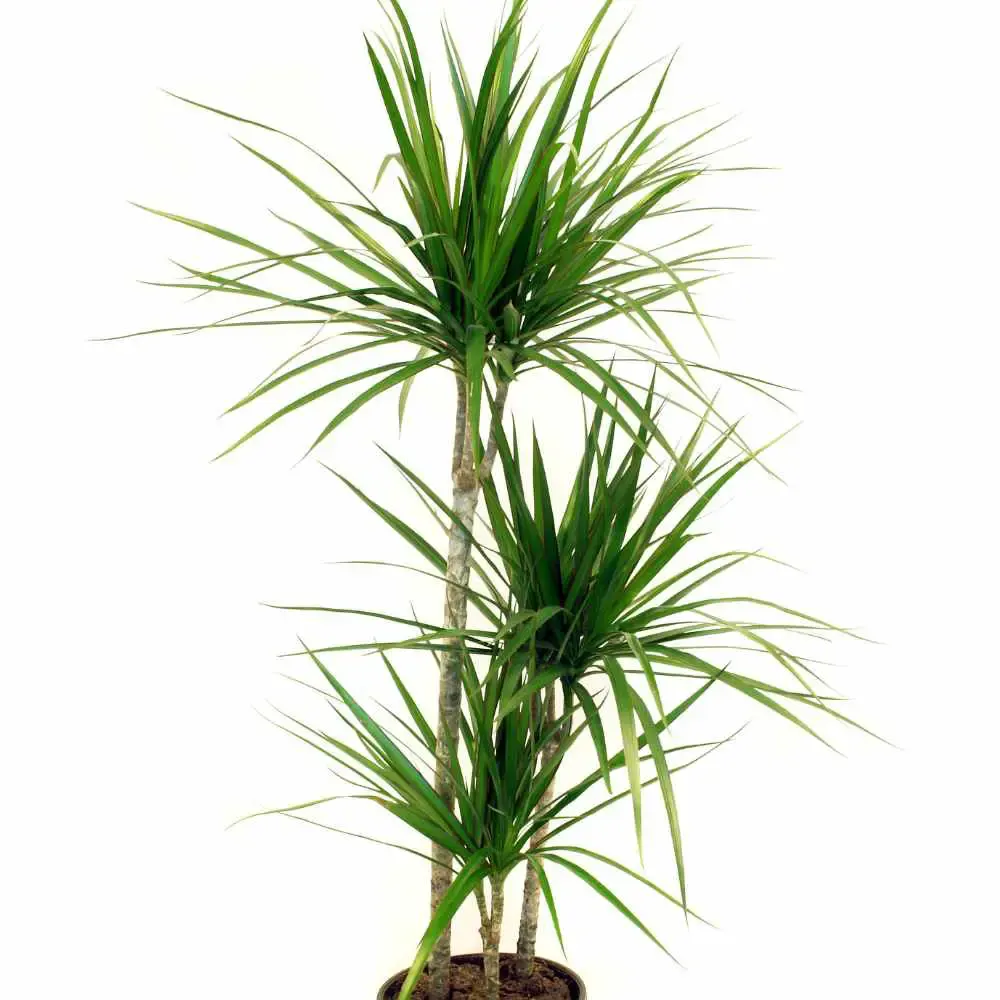
Is Dracaena A Good Indoor Plant?
Dracaena marginata is an excellent indoor plant that adds a touch of tropical beauty to suitable indoor places. The marginata has attractive foliage, is easy care, and has excellent air-purifying qualities. All good reasons to grow them indoors.
Dracaena marginata survive occasional neglect, but treat them well for best foliage and growth. They prefer well-draining soil and moderate watering. But these toughies are not fussy about drying out between waterings, just don’t do it too often or leaves will yellow and drop. They do not require frequent fertilization and can be pruned as needed to maintain their shape and size.
All Dracaena plants tolerate a wide range of temperatures and light conditions. They can grow in low to bright indirect light and a range of temperatures from 60 to 80°F (15-27°C).
Finally, Dracaena plants are well known for their air-purifying qualities. They remove toxins from your indoor air, such as formaldehyde, benzene, and trichloroethylene. So they actually do help improve air quality in your home or office.
Dracaena marginata outdoors:
The Dracaena marginata tree can be grown outdoors in warm, humid climates. In the United States that means USDA hardiness zones 10 and 11. Temperatures need to remain above freezing year-round. Preferably above 50. However, the dracaena dragon tree tolerates dips into the 40 degrees range occasionally.
Protect the tree from frost and cold temperatures which will damage or kill the foliage. If you live in a colder climate, it may be best to grow Dracaena marginata in a container that can be moved indoors during the winter months.
When growing Madagascar Dragon tree outdoors, choose a location with bright, indirect sunlight. Direct sunlight can scorch the leaves. Plant it in well-draining soil and regularly water it to keep the soil moist but not waterlogged.
With the right care and growing conditions Dracaena marginata thrives outdoors. It makes an interesting addition to the right landscape or garden.
How Fast Does a Dragon Tree Grow?
Dracaena marginata is a slow-growing plant. Don’t expect it to grow as rapidly as some other plants. A young Dragon Tree can grow up to 2-3 feet in a year under optimal growing conditions. Growth will slow as the plant ages to only a few inches each year.
The growth rate of a Dragon Tree (Dracaena marginata) can vary depending on other factors as well. Such as the availability of light, water, and nutrients. Adequate light and water, along with regular fertilization, can help your Dragon Tree grow faster.
A large dracaena marginata can grow 6 to 10 feet tall in ideal conditions. This makes it a good sized houseplant or small landscape tree.
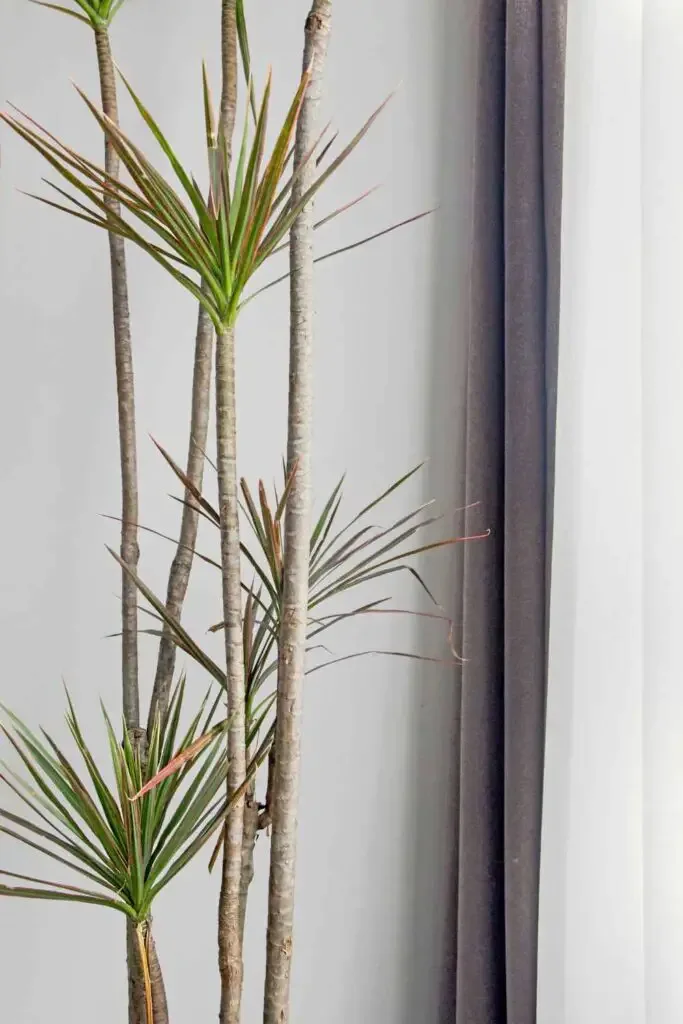
Color Varieties:
The Dragon Tree plant has long, narrow leaves with a reddish-purple tint and green edges. However, there are several cultivars of this plant that have different leaf colors and patterns.
Some common cultivars of Dracaena marginata include:
- ‘Tricolor’: This cultivar has green leaves with pink margins and a white center stripe.
- ‘Colorama’: This cultivar has darker green leaves with a prominent reddish-purple margin.
- ‘Tarzan’: This cultivar has wider leaves than the standard Dragon Tree, with a deep green color and a lighter green mid-rib.
While the standard Dragon Tree has a reddish-purple tint to its leaves, these cultivars offer a range of colors and patterns to suit different preferences and design schemes.
How do I clean my Dragon Tree?
Cleaning your Dragon Tree keeps its leaves looking healthy and shiny. Here are some tips for cleaning your plant:
- Dust the leaves: Use a soft, dry cloth or feather duster to gently wipe away any dust or debris from the leaves. Be gentle, as the leaves can be easily damaged.
- Use a damp cloth: If the leaves are particularly dirty, you can use a soft, damp cloth to wipe them down. Be sure to use lukewarm water and avoid getting water on the soil or into the crown of the plant.
- Use a natural cleaner: For tough stains or buildup on the leaves, you can use a natural cleaning solution. A mixture of water and mild dish soap or a mixture of water and white vinegar can be effective. Use a soft cloth to apply the solution to the leaves and then wipe away with a damp cloth.
- Avoid harsh chemicals: Avoid using harsh chemicals or commercial plant cleaners, as they can damage the leaves and harm the plant. Stick to natural solutions for cleaning your Dragon Tree.
- Only clean the leaves when necessary. Excessive cleaning can damage leaves.
NOTE: Milk is not recommended as a leaf cleaner for plants like the Dragon Tree. While milk has been touted as a natural cleaner for removing dust and debris from plant leaves, it can also leave behind a sticky residue that can attract pests and promote the growth of fungal diseases.
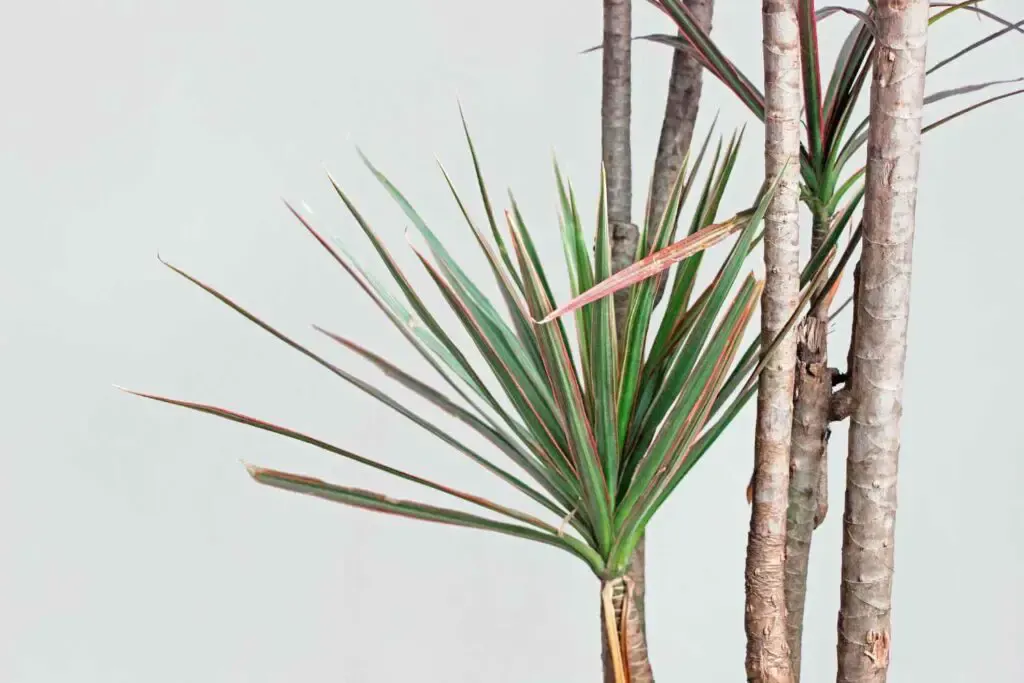
How do you care for Dracaena marginata?
How often should I water my Madagascan Dragon Tree? Overwatering can lead to root rot, so let the soil dry out slightly between waterings. It likes well-draining soil and should be watered when the soil is dry to the touch. The plant is also sensitive to fluoride, so it’s best to use distilled or rainwater when watering.
Does Dracaena marginata need sunlight? Dracaena marginata prefers bright, indirect light but can tolerate lower light conditions. Direct harsh sunlight will bleach the leaves, cause leaf burn and the plant will suffer.
What is a Dracaena Marginata Open Weave Container? Dracaena marginata open weave is a particular pot type to plant your dragon tree in. The container will have a unique open weave pattern, usually made of a natural material such as wicker or bamboo. Open weave containers have open spaces in the sides and bottom of the pot that allow air and water to circulate more freely around the plant’s roots. The same concept used in Orchid Pots.
Open weave containers provide better drainage and aeration for the plant. This helps prevent root rot and allows the plant to grow more vigorously. The open weave design is a very attractive natural look that complements the tropical appearance of the Dragon Tree.
The open weave designed planter is a good choice for those looking to grow a healthy and visually appealing Dragon Tree plant in a container. You can find open weave pots in garden stores occasionally.
Here is our quick guide for caring for the Dragon Tree. To keep your plant as its best, follow these Tips. For more detailed care information, scroll down to our printable care guide. Happy Planting!
| Familiar Names | Dracaena marginata, Madagascar Dragon Tree, Red-edged Dracaena, |
| Scientific Name | Dracaena marginata |
| Plant Family | Asparagaceae family |
| Care Difficulty | easy |
| Temperature | Happiest at 60 to 75 degrees F. Will tolerate down to 50 and higher temperatures but the plant will be stressed and may drop leaves. Keep out of strong cold drafts. |
| Watering | water with fluoride free water every 7 to 10 days during growing season. |
| Humidity | Prefers humidity levels of 40 to 50% but will tolerate slightly drier air. Use plant grouping, leaf washing, humidifiers and pebble trays to increase humidity to this plant. |
| Soil | Well draining potting mix. Succulent mix or adding perlite to regular potting mix are good choices for this plant. |
| Fertilizer | Feed the plant once a month during the growing season (spring and summer) with a balanced, water-soluble fertilizer. |
| Lighting | Bright indirect light is preferred but tolerates lower lighting. Direct hot sun will burn the leaves. |
| Growth Habit | Grows on upright stem. Leaves for tufts at top of stems. |
| Pruning | Cut off the top of the stem to force tufts lower on the trunk and encourage new stems in the pot. |
| Propagation | Stem cuttings |
Pests
Dracaena marginata care is easy. However, these plants can be susceptible to several pests. Watch for spider mites, mealybugs, and scale insects. Here are some common signs of pest infestations to look for. Use these tips for preventing and treating infested plants. For more information on each of these pests, click the links and read our posts on how to identify and kill them.
- Spider mites: These tiny pests can be difficult to spot, but they can cause leaves to turn yellow or brown and can create webbing on the plant. To prevent spider mites, keep the air around the plant humid and avoid overwatering. If you do notice an infestation, try washing the plant with a mild soap solution and treating it with a commercial insecticide.
- MealybugsThese small, white insects can cause leaves to become discolored and can leave a sticky residue on the plant. To prevent mealybugs, keep your plant clean and dust-free, and avoid overwatering. If you do notice an infestation, you can try removing the bugs with a cotton swab dipped in alcohol, or treat the plant with a commercial insecticide.
- Scale insects: These pests can look like small, raised bumps on the plant’s stems and leaves, and can cause leaves to turn yellow or brown. To prevent scale insects, keep the plant clean and dust-free, and avoid overwatering. If you do notice an infestation, try removing the scales by hand, or treat the plant with a commercial insecticide.
A well maintained plant kept clean and dust-free helps prevent pests from taking hold. If you do notice signs of a pest infestation, be sure to take action quickly to prevent the problem from spreading and causing damage to your plant
Dracaena Marginata Care Guide
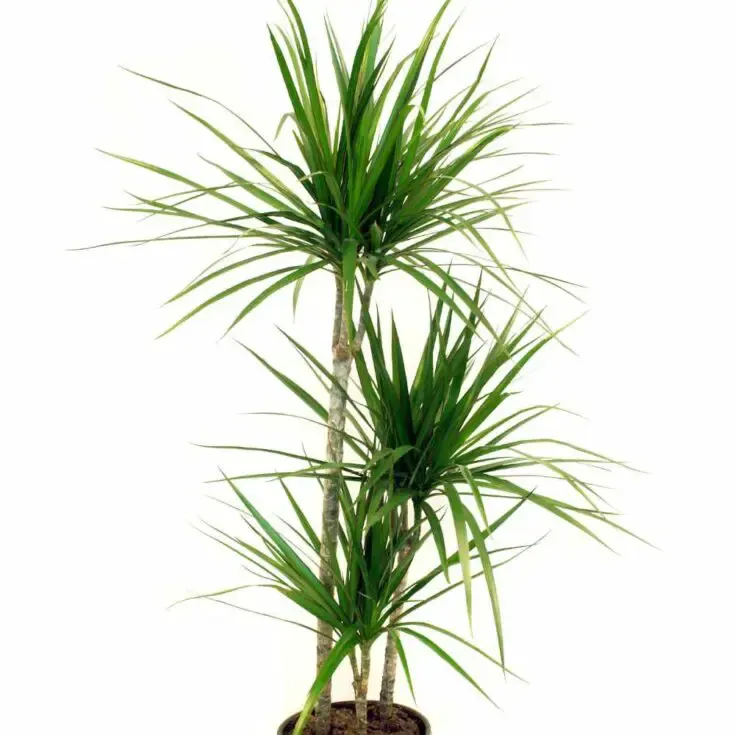
All Dracaena Plants have only a few basic requirements to remain a happy durable plant.
This striking, structural plant is a perfect beginner houseplant. This plant will grow well outdoors in climate zones 10 and warmer.
Materials
Instructions
Soil Preference:
- The Madagascar Dragon plant enjoys a light well draining soil.
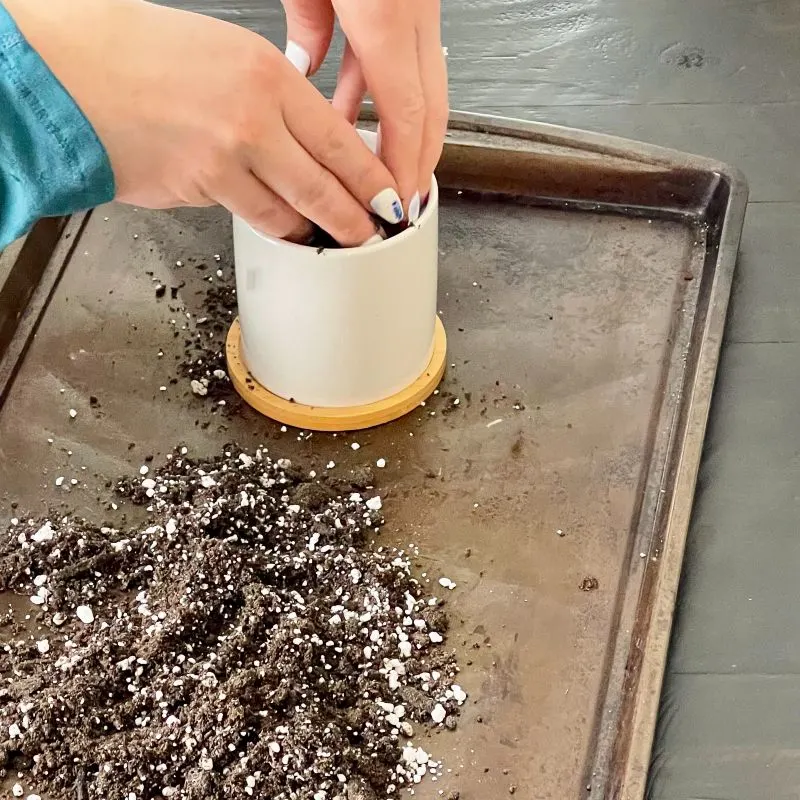
- A mix of potting soil and perlite will keep the roots happy. A succulent soil mix will provide drainage ,but may need more nutrients, so fertilize regularly is using that.
- Our mix for this plant is 50 % regular potting mix to 50% perlite.
- A heavy soil potting mix is not recommended for these plants.
Pot Size and Type:
- This plant will grow to the size of its pot. They can tolerate being moderately root bound. Growth will slow down and the plant will suffer if allowed too much root restriction.
- Open weave pots are made of a natural material such as wicker or bamboo, and have open spaces in the sides and bottom that allow for air and water to circulate more freely around the plant's roots. these type of pots can work well with this dracaena.
This type of container is thought to provide better drainage and aeration for the plant. this helps prevent problems such as root rot and allow the plant to grow more vigorously. The open weave designs create an attractive, natural look that complements the tropical appearance of the Dragon Tree. - If you want to encourage faster growth choose a pot about 2 inches wider in diameter than the current pot. but beware too big a pot if you love to over water. Root rot will occur.
- Any well drained pot can be used. It MUST have drainage.
- Repot every second year or when roots come out the drainage holes on the pot bottom To the next pot size up. When repotting, be sure to gently loosen the roots and remove any circling roots before adding fresh potting soil to the new container.
- You can also add a slow-release fertilizer to the soil to provide additional nutrients for your plant.
- Don't jump to a huge pot from a small one unless you wish to encourage faster growth. Just go to the next size up pot.
Lighting:
- Dracaenas enjoys indirect moderate to bright light.
- However, It will tolerate lower indirect light. If the light is too low the leaves will begin to fall and lose vibrant color. The plant will get leggy and thin as it stretches to the light. Move to brighter light.
- Shield this bush from strong direct light in summer south and west sunny windows. The leaves may burn. Look for dry brown spots on the leaves. If you see them move the plant to lower light.
- Tip: Window sheers or blinds can offset some brief periods of high direct light.
Watering:
- Water your Dragon tree plant when the soil is dry down two inches or more. Tropical plants in general do not like to be overly wet. Try a watering schedule of every 7 to 10 days.
- Watering is best done on a regular schedule so the plant is not over or under watered. Both can cause stress on dracaenas.
- This tropical plant enjoys humidity of at least 40% up to 60%. In dry climates this bush will thrive with a humidifier nearby. or set it in your kitchen or bathroom. For a really dry climate also use pebble trays and group plants together for increased humidity.
- In dormant winter months reduce watering to when the soil is dry down halfway or more .
- Never let this plant get wet feet. If the soil is compacted the bottom of the soil can remain wet which encourages root rot and Fungus Gnats. If you see yellow leaves you are probably overwatering.
How to Fertilize:
- Apply a good qualitybalanced fertilizer monthly through Spring and summer.
- Decrease feedings by late Fall and allow your Dragon tree to rest through the winter months.
- Look for brown spots on the leaves of your plants. This may indicate an over concentration of salts in the roots from over feeding. It can burn the leaves and harm roots.
- The remedy is to set the plant under a faucet of water and let the water run through for 10 minutes or so. Allow the pot to Completely drain. Discontinue fertilizer until the plant recovers.
Temperature:
- Optimal temperatures for this plant are 60 to 75 degrees F. Up to 10 degrees lower night time temperatures are fine. Avoid cold drafty areas for this plant.
- They can be grown outside year round in climate zones 10 to 11.
Pruning and Training:
- Pruning will give you a fuller plant with more even growth.
- Dragon tree plants can be grown as a small tree indoors with a single large stem forming the trunk like a Money tree.
- Or prune off the top of the stem to encourage new and interesting growth and a fuller plant.
- Sharp sterile Hand pruners or sharp strong knife are preferred for pruning. They will give a clean cut that will heal quickly.
Table Top size Plants:
- It’s easy to prune and shape these plants to whatever length and fullness you desire. These are failrly slow growing plants and will work well on a table if properly pruned.
For Taller Bushes:
The Dracaena marginata will grow 5 to 7 feet indoors. If you prefer a shorter bushier plant you will need to trim off the top.
You can then replant the top next to the taller stem to fill out your bush.
After pruning the top will send out shoots from each side of the cut at the node. You can let them grow or trim them back as you prefer.
Leaf Care:
- For the best care leaves enjoy occasional washing.
- This helps keep the stomata (leaf pores) open for plant respiration.
- Healthy leaves with a good clean surface are most able to resist pests.
- Dusty leaves will starve the plants of water exchange through humidity.
- Hand Wash with water or mild dish soap to wash clean leaves.
- Use leaf shine Neem oil to create a shiny surface.
- You can also use a hose or shower to clean off a large dracaena marginata.
Pests:
We have posts on all the pests listed below. Click the links to learn more about them and how to get rid of various pests on your plants.
- Dracaenas are not fussy and resist pests quite well when in good health. However all plants get attacked by pests.
- Stress by long term poor watering practices, poor light, extreme temperatures and soil conditions are contributors to pests.
- Washing the leaves occasionally will help keep pests from establishing themselves on the plant.
- Spider mites are the biggest problem for many plants. Watch for the webs. Treat immediately and continue for two weeks or more to remove the next generation of spider mites after the adults die. Eggs attach to the leaves and cannot be washed off.
- mealy bugs, scale, thrips and whitefly are also common houseplant pests you will see in a stressed lemon lime plant.
- Read our post on How to get rid of aphids and other pests with our homemade pesticide soap recipe or neems oil.
- To minimize the possibility of pests be sure to check all nursery plants before bringing them home.
- Quarantine all new plants until you are sure no pests live in them.
How to Propagate Dracaena Marginata:
- Propagation is best done through stem cuttings.
- Cut the stem so you have a 3 to 6 inch leaf stem with a healthy leaf top. Cutting the stem at a 45 degree angle will help penetrate a thick stem and give more surface area for propagation.
- Place the stem into rooting hormone gel.
- Now plant the stem in moist soil or other planting medium.
- After several weeks roots will grow.
- Make sure to keep the soil moist until the roots begin to set into the soil.
Watch our video below on. plant propagation methods. The dracena dragon tree is propagated similarly to my Dwarf Umbrella in this video.
Toxic Plant:
This plant contains Saponins which are toxic to humans and pets.
- This is a medium toxin and non lethal.
- Symptoms: weakness, drooling, vomiting, diarrhea and depression. Be aware, Contact your vet if symptoms persist. Dehydration is deadly to small pets.
- Poison Part: Leaves and stems
More Lovely Plants:
Here are more structurally eye catching and beautiful plants perfect for your home or office. See all of our Houseplants here!
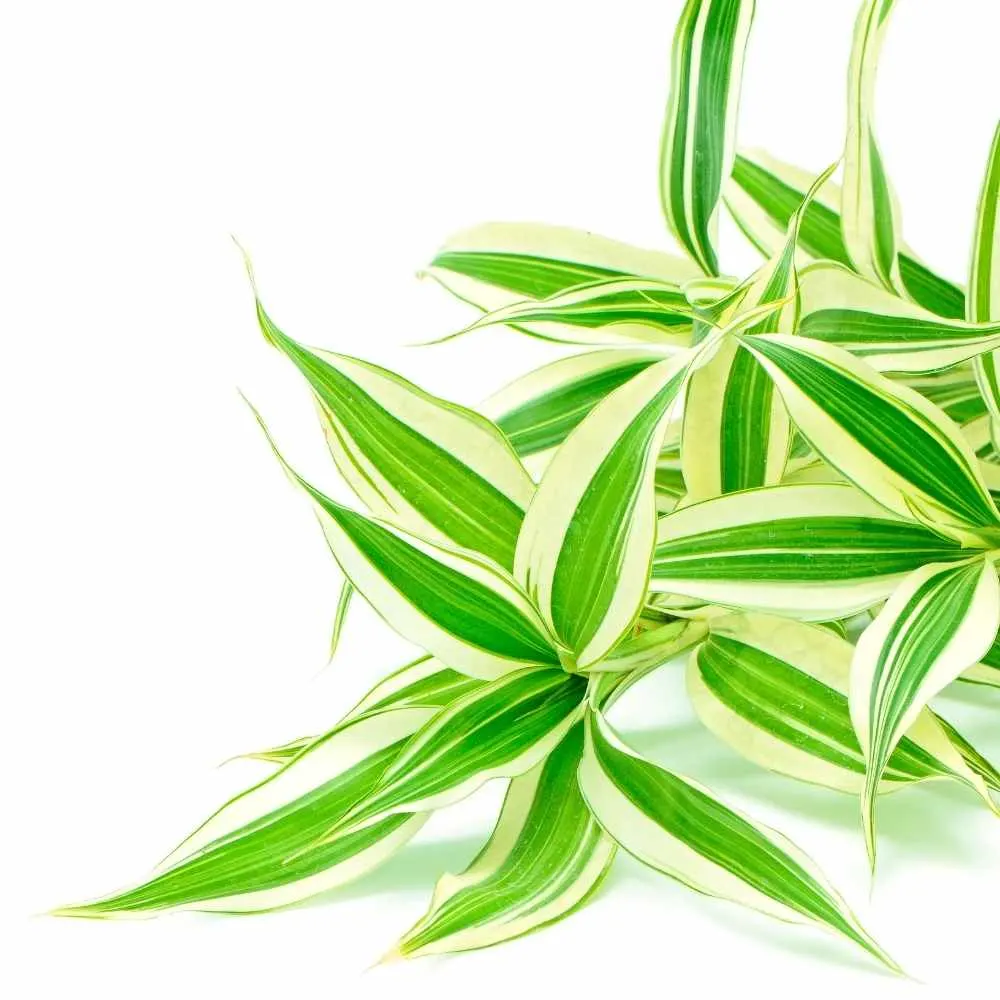
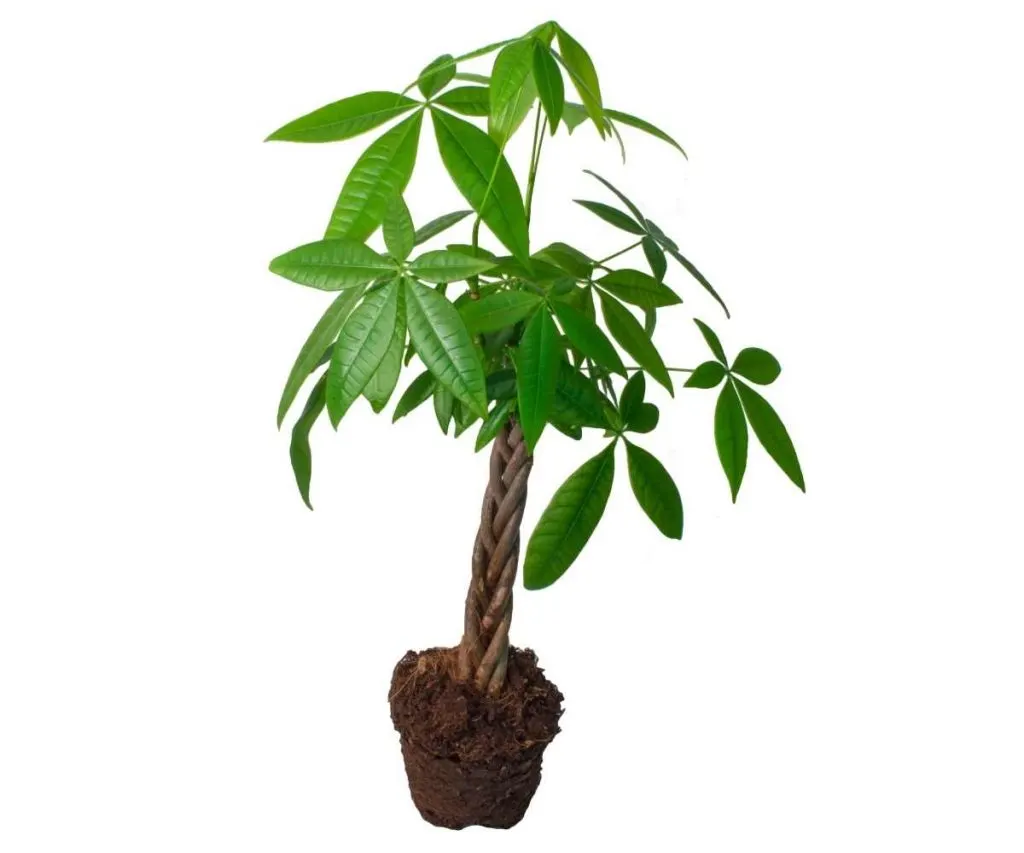
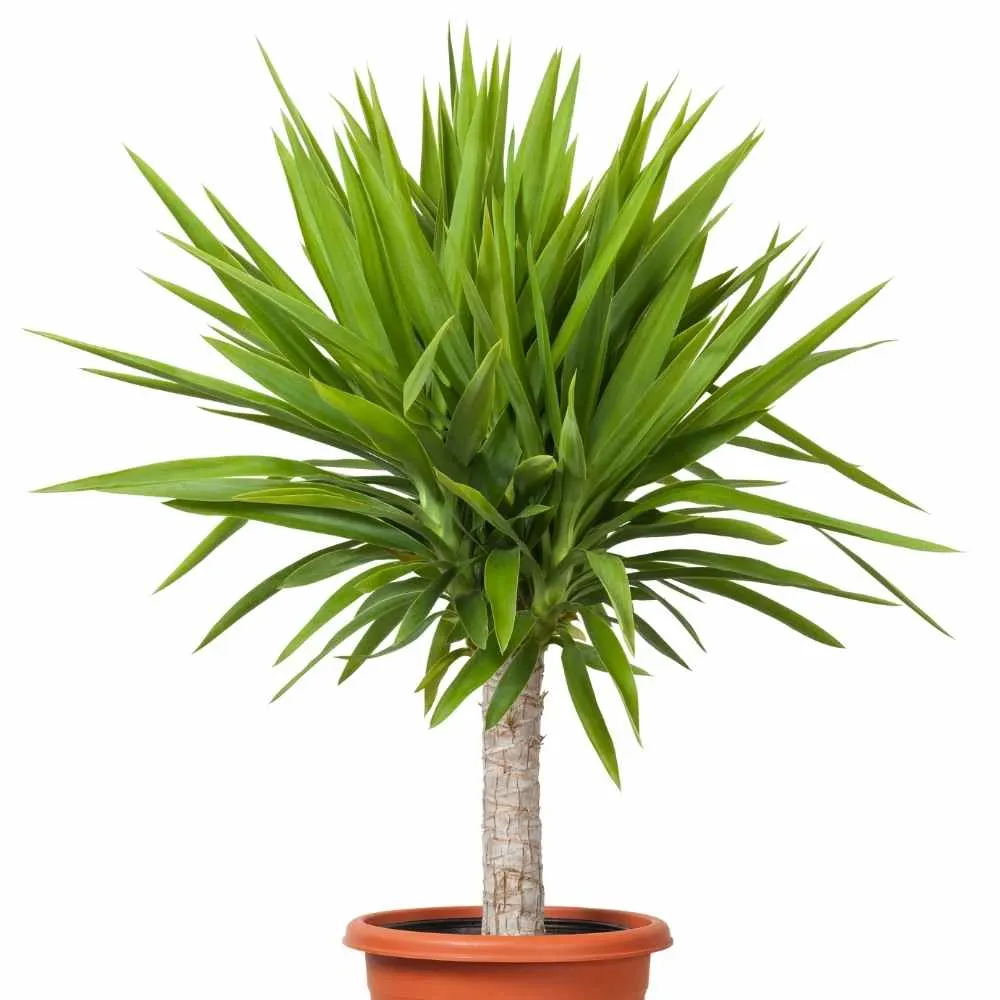
Follow Us:
Find us on YouTube, Instagram , Pinterest and TikTok! We love to Plant chat. We also comment, like and occasionally share your content to our daily stories. We’d love to see your plants. Share your joy in your houseplants. Happy Planting!

